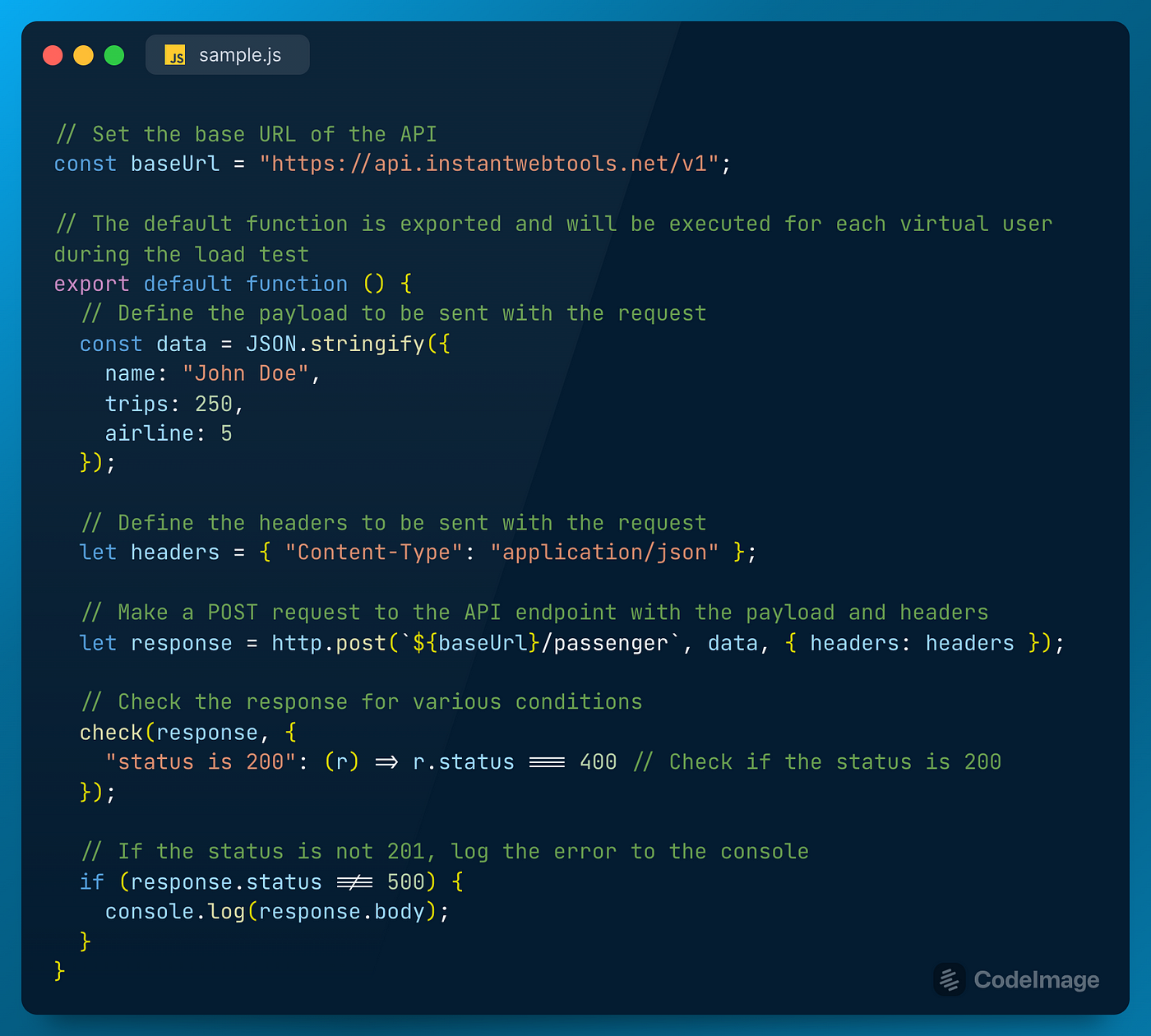K6: The Load Testing Framework That’s Changing the Game
 Farhan Labib
Farhan Labib
Performance testing is essential to software development, ensuring that your application can handle the load and stress of real-world usage. Many tools are available for performance testing, but one that stands out is K6. K6 is an open-source load-testing tool that allows testers to test the performance of their applications and APIs. This blog post will take a closer look at K6 and its advantages over other performance testing tools, such as Apache JMeter.
K6 is a modern, scriptable and developer-friendly load-testing tool. It is written in Go and supports both JavaScript and Go scripts. One of the key advantages of K6 is its simplicity and ease of use. With a slight learning curve, developers or testers can quickly get started with K6 and start testing their applications.
Another advantage of K6 is its flexibility. K6 allows testers to create custom test scripts and define the load stages. This flexibility allows for more accurate and realistic testing, as testers/developers can simulate the exact load patterns of their applications. K6 also supports cloud-based testing, allowing for easy load-test scaling.
K6 also offers several built-in metrics, such as response time, requests per second, and errors per second. These metrics provide valuable insights into the performance of an application and allow testers/developers to identify bottlenecks and optimize code.
One of the most significant advantages of K6 over Jmeter is that K6 is built with a language that is more familiar to developers, JavaScript or Go, in contrast to Jmeter, which uses a separate XML-based language. Also, k6 has a very simple and easy-to-understand syntax that can be easily understood by developers.
Nevertheless, Jmeter is a powerful and feature-rich load-testing tool that has been around for a long time. It has a large user community and a wide range of plugins and extensions that can be used to extend its functionality. However, Jmeter can be quite complex and has a steeper learning curve, which may make it less accessible to some developers. Jmeter requires more resources to run load tests and can be quite resource-intensive.
To summarize, K6 is a powerful, flexible, and easy-to-use load-testing tool that provides developers with the tools they need to ensure their applications can handle the load and stress of real-world usage. Its simple syntax and ease of use make it accessible to developers of all skill levels. K6’s flexibility and built-in metrics provide valuable insights into the performance of an application. While Jmeter is a more mature and feature-rich tool, it can be quite complex and resource-intensive. If you are looking for a load testing tool that is simple and easy to use, then K6 is the perfect choice for you.
Check out my GitHub repository for a sample K6 performance testing framework. The repository includes a sample test file which is written in Javascript and can be used as a reference to start your own performance testing with K6.

Thanks for reading my article on k6. If you found it valuable, follow me on Medium and LinkedIn for more updates and insights on software quality assurance. I’ll be sharing new articles and resources to help improve your process and deliver better products. Thanks again for reading, and I look forward to connecting with you!
Subscribe to my newsletter
Read articles from Farhan Labib directly inside your inbox. Subscribe to the newsletter, and don't miss out.
Written by

Farhan Labib
Farhan Labib
3 Years+ experience in Software Quality Assurance Testing of Mobile and Web-Based Applications using Manual and Automation Testing. Experience in Functional, Exploratory, Regression, Cross-browser/platform, Compatibility, and GUI Testing. Knowledge in creating Test Plans, defining Test Scenarios and Test Cases, developing and maintaining test scripts, analyzing bugs, coordinating with the development team, and tracking the bug fixes till closure. Experienced in API & UI automation and Performance Testing. Easily collaborate with developers and project managers to accomplish milestones.